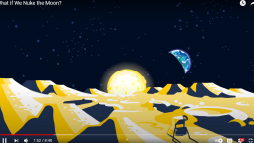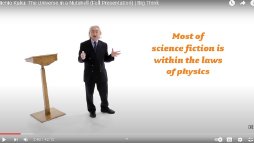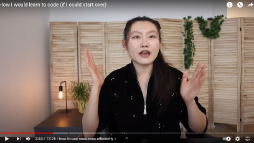
This article first appeared in Digital Edge, The Edge Malaysia Weekly on August 9, 2021 - August 15, 2021
This is not the secondary school physics class you struggled with, or the trigonometry you never quite mastered.
Thanks to video magic and a bit of internet fairy dust, there are content creators on YouTube producing some of the best and most imaginative applications of the Science, Technology, Engineering and Mathematics (STEM) education fields.
If you are yearning for a gentle reintroduction to some of the topics you once found too intimidating to learn, look no further than the following YouTube channels.
1 Kurzgesagt — In a Nutshell (15.5 million subscribers)
Pronounced “Koords-ghe-zhact”, it is German for “in a nutshell”, and perfectly encapsulates the kinds of videos that this YouTube channel makes.
In a nutshell, Kurzgesagt asks really interesting, offbeat and very often topical questions about the nature of our universe and human existence, and then proceeds to demonstrate the scientific basis for these issues.
Videos such as “How to terraform Venus”, “What if the world turned to gold?” and “Can you upload your mind and live forever?” could have come from the curious mind of a five-year-old.
Thankfully, however, rather than dismissing these questions, Kurzgesagt tackles them head-on, and gamely tries to come up with the most scientifically sound explanations and reasoning.
The creators employ a combination of high-quality animations, sharp script writing and a research methodology that requires them to run their scripts by scientists and industry experts beforehand.
Thanks to Kurzgesagt, you will now know what happens if we simultaneously detonated every single nuclear bomb on earth or, perhaps, if organic food really is the better way to eat.
2 Big Think (3.1 million subscribers)
One of the more well-established channels on YouTube, Big Think has been actively putting out short, medium and long form content for well over 10 years now.
The channel tackles topical issues of the day — usually science and technology-based, but politics and religion as well — by having famous industry personalities talk about them at length.
It probably also has the most eclectic personalities on this list. The presenters are the who’s who of, well, everything: the late Republican Presidential nominee John McCain, former US President Jimmy Carter, musician Wyclef Jean, fund manager Bill Ackman, physicist Dr Michio Kaku, linguist and philosopher Noam Chomsky, British comedian Ricky Gervais, Slovenian philosopher Slavoj Žižek, Sir Richard Branson as well as American philosopher and civil rights activist Dr Cornel West, to name just a few.
If you have even a passing interest in the STEM fields, or geopolitics, religion and philosophy, chances are you will find very meaningful videos on Big Think’s channel.
Here, key concepts are explained for the benefit of a non-technical viewership, with complexity gradually layered on as the video progresses. For example, billionaire fund manager and Pershing Square founder Ackman delivered an invaluable 45-minute lecture on key principles and foundations of finance and investment. It is Big Think’s third most popular video so far, with 6.4 million views.
Its most popular video? A 45-minute lecture by Kaku on the nature of the universe.
3 Two Minute Papers (1.02 million subscribers)
Do you like artificial intelligence (AI), machine learning and animation? Are you also not particularly concerned about the prospect of self-directed killer machines in the future?
Then you owe it to yourself to check out this brilliant YouTube channel, run by Dr Károly Zsolnai-Fehér. In each video, he delves into academic papers on AI-based applications that simulate increasingly photorealistic images.
Are you curious about a photorealistic video sequence of a cityscape rendered entirely on a computer? Two Minute Papers is where it’s at. Want to see two competing AI applications outdo one another at hide-and-seek? Zsolnai-Fehér has that covered too.
What about something that maybe hits a bit closer to home? Two years ago, Two Minute Papers ran a video about how OpenAI Five — an AI application developed by a company of the same name — beat a world champion “Defense of the Ancients 2” (DOTA2) team, twice in a row.
This was a particularly momentous achievement, because DOTA2 is one of the most complex and difficult-to-master role-playing games on the market. It requires constant monitoring of any number of enemy players, as well as the ability to anticipate move sets, and adapt to developing battles on the fly.
Midway through the game, with OpenAI Five trailing then world champions OG slightly, it was queried on its win probability. It came back with an “above 95%” probability of defeating OG outright. True enough, it did just that. Twice.
4 Astrum (757,000 subscribers)
Thanks to Astrum, you never need to feel ashamed about “having your head in the clouds”.
A YouTube channel run by Alex McColgan, Astrum features stunning visuals of our solar system and beyond. The videos, which he produces and narrates, come with high-quality graphics, images as well as endlessly interesting explanations and theories about the nature of our universe.
Some of his most popular videos delve into the lifespans of unmanned rovers such as Opportunity on Mars. Opportunity first touched down on the Red Planet in January 2005.
It transmitted invaluable information back to its operators at the National Aeronautics and Space Agency (Nasa) over the course of more than 5,000 days, or more than 15 years. Opportunity lasted well beyond its anticipated operating lifespan.
This is one of the more interesting and self-directed channels on YouTube for all things outer space. If the final frontier is your cup of tea, then look no further than McColgan’s Astrum.
5 Tina Huang (99,000 subscribers)
A data scientist at Instagram, Huang has been on YouTube since 2013. But it has been only in the last 11 months that she began creating content, and it did not take long for her videos to hit big numbers.
She occupies a really interesting space in the broad “self-study digital education” ecosystem. Where many other more established YouTube personalities in this space put out great videos teaching viewers how to code, Huang instead teaches viewers “how to learn”.
Her most popular video so far is a three-month-old feature called “How to self-study technical things”. It had more than 600,000 views at the time of writing, and this is a theme that Huang has settled on over the last year or so.
As external barriers to lifelong education continue to erode, people such as Huang have clearly recognised a need for people in non-technical fields to first learn the “how to” of studying before pursuing a technical course as an independent learner.
She also talks about how she landed and strategised for key job interviews over the years.
Huang’s videos are presented in simple but highly systematic terms. They tend to have a recognisable and easy-to-follow format, so viewers generally know what to expect from each video.
Her content is relevant to full-time working adults looking to transition into technical fields, as well as students trying to get a foot in the door.
Save by subscribing to us for your print and/or digital copy.
P/S: The Edge is also available on Apple's App Store and Android's Google Play.






